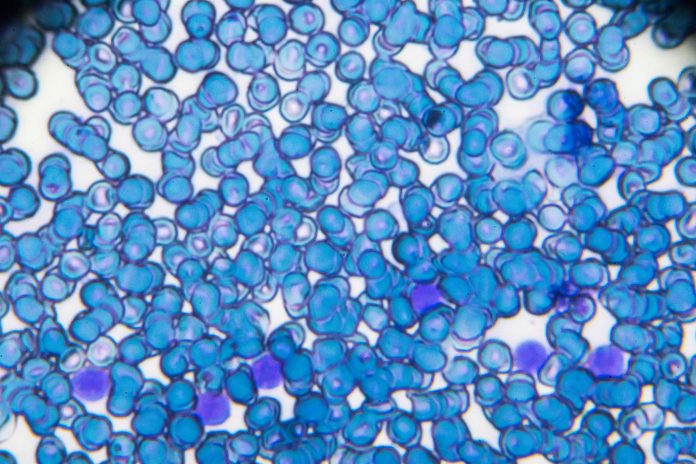
Dutch researchers have shown that extending maintenance therapy from two to three years improves survival in children with acute lymphoblastic leukemia (ALL) harboring an IKZF1 deletion.
The Dutch ALL-11 study, led by Professor Rob Pieters from the Dutch Childhood Oncology Group (DCOG) and the Princess Máxima Center for Pediatric Oncology in Utrecht, Netherlands, also showed that de-escalation of therapy is possible for certain groups of patients.
Pieters presented the findings at the 64th American Society of Hematology Annual Meeting in New Orleans.
The primary aim of the Dutch ALL-11 protocol was to improve the overall outcome relative to the previous DCOG ALL-10 protocol by increasing therapy for IKZF1-mutated cases, decreasing the cumulative dose of anthracyclines, omitting cranial irradiation and total body irradiation, and individualizing asparaginase therapy for all patients, and also by decreasing therapy for patients with Down syndrome, poor prednisone responders (PPRs), and individuals with ETV6::RUNX1 ALL.
The ALL-10 protocol improved outcomes versus earlier versions by stratifying patients according to minimal residual disease (MRD) levels into standard risk (SR), medium risk (MR) and high risk (HR). Therapy was reduced for SR patients and intensified for MR and HR patients, but the investigators noted that there was still a poor response among patients with ALL harboring an IKZF1 deletion, particularly in the MR group.
The ALL-11 protocol therefore extended maintenance with 6-mercaptopurine and methotrexate from 2 years to 3 years for MR patients with an IKZF1 deletion. These patients were not simply moved to the HR group because HR therapy has a 10% treatment related mortality rate, the protocol notes.
Other changes included omitting anthracyclines from treatment of HR children with Down syndrome as these patients had a high risk for death from infection in ALL-10.
The maximum cumulative dose of anthracyclines in the ALL-11 protocol was also lowered from 300 mg/m2 to 240 mg/m2 by cutting down the number of doses in all patients in the MR group from six to four.
Prednisone poor response was no longer used as criterium for HR disease. Instead, PPRs were assigned to the MR group. Finally, MR individuals with ETV6::RUNX1 ALL, which is highly sensitive to asparaginase, were given reduced MR therapy by deleting anthracyclines from the intensification phase but not from induction.
In all, 819 consecutive patients aged 1 to 18 years with ALL were enrolled on ALL-11 and stratified by and treated according to MRD status; 23.6% were SR, 70.4% were MR, and 6.0% were HR.
Pieters reported that the 5-year overall survival (OS) rate for all patients was higher with the ALL-11 protocol than with the ALL-10 protocol, at 94.2% versus 91.8%. The 5-year event-free survival (EFS) rate was also higher with ALL-11 than with ALL-10 (89.0% vs 87.1%), whereas the cumulative risk for relapse (CIR; 8.2% vs 8.4%) and the rate of death during remission (2.3% vs 2.9%) were lower when patients were given the updated treatment protocol.
By risk group, the 5-year OS rates were 97.5% among SR patients, 70.4% among MR patients, and 6.0% among HR patients.
Pieters noted that prolonging maintenance for the MR patients with an IKZF1 deletion reduced the 5-year CIR by a significant 2.9-fold, from 25.6% to 8.8%. EFS in this group improved from 74.4% with ALL-10 to 91.2% with ALL-11.
Furthermore, omitting anthracyclines from therapy for children with Down syndrome did not significantly impact outcomes, with 5-yr OS and EFS rates both at 87.0% and no relapses recorded in this time.
Omitting anthracyclines from intensification did not impact the outcome among patients ETV6::RUNX1 ALL, with 5-year OS and EFS rates at 99.4% and 98.3%, respectively
Therapy de-escalation was also successful for the PPR group. In this case, the 5-year OS rate was 94.9% among patients treated with the ALL-11 MR regimen compared with 81.0% for those who received the ALL-10 HR regimen. The 5-year EFS rates in these groups were a respective 81.1% and 73.8%.
Pieters commented: “The five-year survival rate for children with acute lymphoblastic leukemia has increased enormously since the 1960’s, from zero to 94%, but the last. Steps are the most difficult. We are now one step closer to curing all children with ALL. We have also largely been able to remove a drug that poses a risk of heart damage from the treatment of children with a less aggressive form of the disease. The latest results for children with leukemia therefore fit perfectly with our mission: curing more children with cancer with fewer side effects.”













